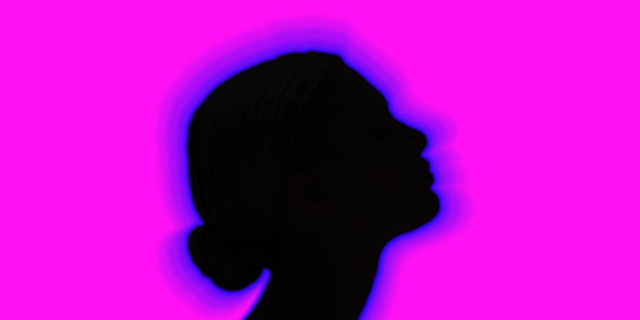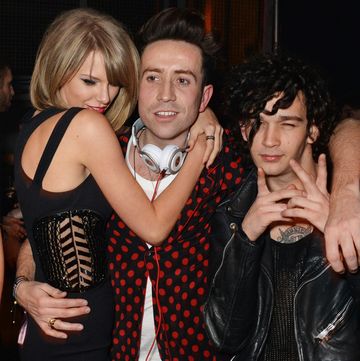Here I am again, at another wacky workshop, trying to get to the root of the anxiety I've had for many years. If I can figure out what's causing it, perhaps I can get rid of it for good, instead of masking it with the prescription pills (Xanax, Valium, etc.) I've taken for what feels like ever. I don't want to mask my anxiety with pills anymore; I want to get to the root of it. So, for a few hours, I'm breathing quickly and deeply, in and out in a circular motion, with no gap between my in breath and out breath, essentially hyperventilating to enter a dreamlike state of consciousness. In this state, visions may emerge that, practitioners say, can help breathers address whatever issue they're trying to work through. Some people have an out-of-body experience. Others may have hallucinations. Some might feel like they're reliving their own births.
I'm at a £230 Holotropic Breathwork workshop at the Oakland Marriott City Center. The 120 attendees include older women wearing chunky diamond wedding rings, their hair perfectly styled, and a man with a Southern accent, a ponytail, and comfortable walking shoes. We're here to practice a type of breathing that, for some, creates a feeling akin to that of being on a psychedelic drug. After a morning instructional session, we've convened in the ballroom to arrange blankets and pillows on the orange and maroon carpet.
The workshop is part of the 2017 installment of the Psychedelic Science conference, convening for the third time since 2010 to discuss the latest science on psychedelics, including MDMA, which is moving closer toward FDA approval as a treatment option for post-traumatic stress disorder. Panelists include the former head of the National Institute of Mental Health and researchers from NYU and other universities.
Stanislav Grof invented holotropic breathwork and is here to run the workshop, assisted by 24 facilitators. In the 1950s and '60s, Grof treated his psychiatric patients suffering from neurosis, psychosis, addiction, and alcoholism with LSD. After the government outlawed the drug in 1968, Grof, now 86, invented holotropic breathwork as a way to reach a legal psychedelic high in order to continue his work with non-ordinary states of consciousness and mental health.
Participants are screened by the facilitators for conditions such as schizophrenia and a history of cardiac arrest. I'd read a lot about the practice and heard it can help people overcome traumatic life events. One woman I know worked through childhood abuse. Another dealt with the pain of a terrible breakup.
However, few in-depth scientific studies have been conducted to determine what, exactly, happens in the brain and the body during this breathwork. Jack Feldman, professor of neurobiology at the David Geffen School of Medicine at UCLA, studies how the brain generates breathing movements and the effects of breathing on emotion and arousal. "The preponderance of evidence shows that breathing movements can modify emotional states," he says. It could be that a change in the blood's gases — a lowering of carbon dioxide that would result during hyperventilation — might cause an emotional shift. Another possibility is that the brain stem, which helps regulates blood gases, is responsible for the mood regulation.
Feldman says he would need to measure exactly how much holotropic breathwork lowers the carbon dioxide levels in the blood to know if it could pose a danger. But generally, he says, short-term hyperventilation by a normal, healthy person at sea level won't likely cause long-term damage because hyperventilating doesn't affect the amount of oxygen that reaches the brain (although for some it could temporarily change blood pH).
Dr. Helen Lavretsky, a psychiatry professor, also at the Geffen School of Medicine, who studies the physiological effects of meditation, including breathwork, adds that those with high blood pressure, lung conditions, or heart disease could see side effects, including increased blood pressure and anxiety, while it could exacerbate anxiety in those already suffering from the condition. "Familiarize yourself with the work before you go into it," she says. "Those who have had traumatic experiences, or have fragile personal boundaries, or are suffering of depression or anxiety, or are prone to experiencing hallucinations or delusions in particular should be careful."
Still, I'm not worried. I like trying new techniques; plus, years of traditional therapy, antidepressants, and anti-anxiety pills haven't worked for me, though I know they do for many. I sit on a blanket in a corner of the ballroom, waiting to start the session, which will last about three hours, though breathers can stop earlier if they feel they've worked through what they came to do. I'm blindfolded, which is meant to limit distractions. I have a "sitter" to watch me and make sure I have whatever I need — tissues, water, or even a hug. It might seem awkward to be so vulnerable in front of a total stranger but, strangely, it isn't.
The music begins — loud, abrasive chanting meant to agitate you into breathing quickly. I breathe as instructed, and as the music intensifies, I start breathing deeper and faster than normal. After about 10 minutes, my hands and feet start to tingle, my lips curl into a wrinkled "O," and my limbs go numb. Grof warned us about this, since he says this happens to about half of those who try this type of breathwork, so I'm not worried. But I'm starting to get bored and the old, familiar feelings of anxiety creep in again. Why is nothing happening? Am I doing it wrong?
I raise my hand and call over James Eyerman, a psychiatrist and the holotropic breathwork facilitator leading the breakout group I'd been assigned to. I ask him to breathe with me so I know I'm doing it right. I breathe harder and faster, following his lead, and after about 20 minutes, I'm pushed into a state between states, not awake and not asleep; it feels like I'm floating in and out of consciousness. It's definitely trippy, if not a full-blown psychedelic experience.
This continues for another half hour or so. I see flashes of colors and images I cannot decipher. Suddenly, a wave of fear wells up inside me and I'm terrified. I relax, and I try to accept this fear into my body and see what it has to tell me.
After about 25 minutes, out of nowhere, I start to cry in huge, hard sobs. A facilitator rushes to me, and I feel her and my sitter's hands on my back. When I stop crying, I feel an airiness. A little voice I'm sure is mine but that I've never heard before keeps saying inside my head, "You are a child of God and you are loved," over and over. I consider myself spiritual but not religious, but even I'm surprised to hear a voice in my head talking about God.
But the voice is right — I am loved, sitting on an orange hotel ballroom carpet, surrounded by people trying to heal. Now, the music is soft and full of strings and women's voices. I sit in lotus position and I feel like I could sit there forever.
The music ends and the session is over. I get up and walk to the exit, where fruit and cheese plates await us. Although I feel calm, I don't yet know that I've cured my anxiety for good — some people do in one session, while others practice holotropic breathwork once a week for years if they're dealing a chronic issue, like depression.
But something does feel like it's shifted inside. I know I'll give this another shot. I want to hear that voice in my head again.













